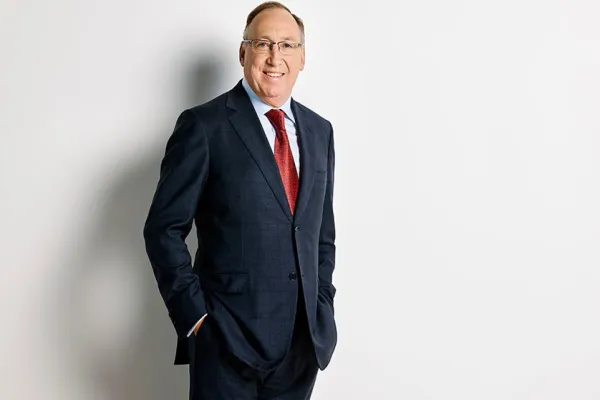The grumpy old men have failed for now to unseat Phil Purcell as chairman and CEO of Morgan Stanley, but they may have set the stage for wider changes in the financial services industry.
Eight Morgan Stanley veterans, led by ex-president Bob Scott and advised by ex-president Bob Greenhill, have challenged Purcell's leadership, proposing that he be removed and the firm split up -- essentially reconstituting it as it was before the 1997 merger of retail Dean Witter Discover and institutional Morgan Stanley. The dissidents' efforts, ironically, could lead to the opposite outcome: a deal in which a weakened Morgan Stanley gets even bigger by merging with or being acquired by a rival seizing on a once-in-a-lifetime opportunity. That in turn could force Wall Street's other major powers, Goldman Sachs and Merrill Lynch, to reconsider their own independence.
After meeting the last weekend of April, Morgan Stanley's board reiterated its support for Purcell, allowing him to remain as chairman and CEO, while adopting a number of governance reforms, such as naming a lead director, adding two independent directors to the board and eliminating the proviso that the CEO could be removed only with the approval of a supermajority of the board (a measure adopted at the time of the merger to protect both Dean Witter's Purcell and his then-president, Morgan Stanley's John Mack).
These measures are unlikely to satisfy anyone except defenders of Purcell, who has enjoyed the support of his close-knit board for years. To be sure, the board is now taking care to document its fiduciary responsibility to protect itself from future challenges. But its moves won't satisfy disgruntled bankers, peeved firm veterans or disaffected institutional investors.
"The institutions want an improvement in operating results and a strategy to get there," says one knowledgeable source. "What the board gave them so far is just enough to piss them off."
"Purcell has relinquished the fortress," sums up one Morgan Stanley insider. "But what the board has done avoids the issue, which is his management."
Critics carp about Morgan Stanley's laggard performance, particularly the poor showing of the former Dean Witter businesses (the Discover Card, retail brokerage, mutual funds), run by Dean Witter veterans and Purcell loyalists. The businesses of the old Morgan Stanley -- sales and trading, underwriting, merger advisory and the like -- are thriving. But top executives of those operations -- from Vikram Pandit, who headed the firm's institutional business, to mergers maven Joe Perella -- have left since March. Insiders expect more senior bankers to decamp in the wake of the board's move.
In short, Morgan Stanley's vaunted banking franchise has been weakened. Whether the firm is as badly damaged as Lehman Brothers was by its 1980s civil war is unclear, but the result could be the same: merger.
The board said it would not consider splitting up the company beyond a proposed spin-off of its Discover Card business, but a merger would allow Purcell, who has long hinted that he would like to do a deal, to leave with some of his dignity -- and much of his vision of creating a financial services conglomerate -- intact. It would spare him a difficult rebuilding job: Management ranks are thinned, and recruiting talented outsiders in the midst of a culture war promises to be difficult. A deal would also allow Purcell to avoid a showdown next year with unhappy shareholders itching to wage a campaign, similar to the one against Disney's Michael Eisner, to withhold their annual meeting votes from him and other directors.
Morgan Stanley offers instant world-class financial status to would-be acquirers. Nonetheless, the list of potential buyers is short. HSBC, which is trying to build up its investment banking de novo, is an obvious candidate, but veteran market watchers doubt that its thrifty chairman, Sir John Bond, will relax his fabled discipline to take the plunge. A combination with J.P. Morgan Chase would hearten sentimentalists by reuniting the House of Morgan, but it would be bloody; J.P. Morgan is believed to have examined a deal seriously and decided to take a pass for now as it struggles to integrate its most recent acquisition, Bank One. Other players, like Bank of America, Barclays, Wachovia and Wells Fargo, could emerge, but it's not clear that any would want to pay a big premium only to have to contend with cleaning up the fallout from an already dinged-up firm.
Were any to buy Morgan Stanley, it would instantly reshape the financial landscape, giving a powerful further endorsement to the concept of the universal bank. This model, most clearly embodied by Citigroup and J.P. Morgan, inspired fear and trembling just a few years ago, as the all-things-to-all-customers banks muscled in on Wall Street's business. Stronger corporate earnings and a loosening of credit have since eased the threat from the universal banks, which were increasingly tangled in their reputation-tarnishing web of connections to failed giants like Enron, Parmalat and WorldCom. A Morgan Stanley spokesperson reiterated management's frequent statements supporting the current model and said that the firm will continue to remain independent and grow from within.
But any smugness the traditional investment banks now feel would soon evaporate if Morgan Stanley joined with, say, an HSBC. Such a combination would be high-risk -- consider the sorry history of Credit Suisse's purchase of First Boston and then of Donaldson, Lufkin & Jenrette -- but full of undeniable promise. Goldman and Merrill, which have entertained suitors and wooed their share of prospective partners, would risk getting caught in a very treacherous middle ground if they failed to follow suit.





